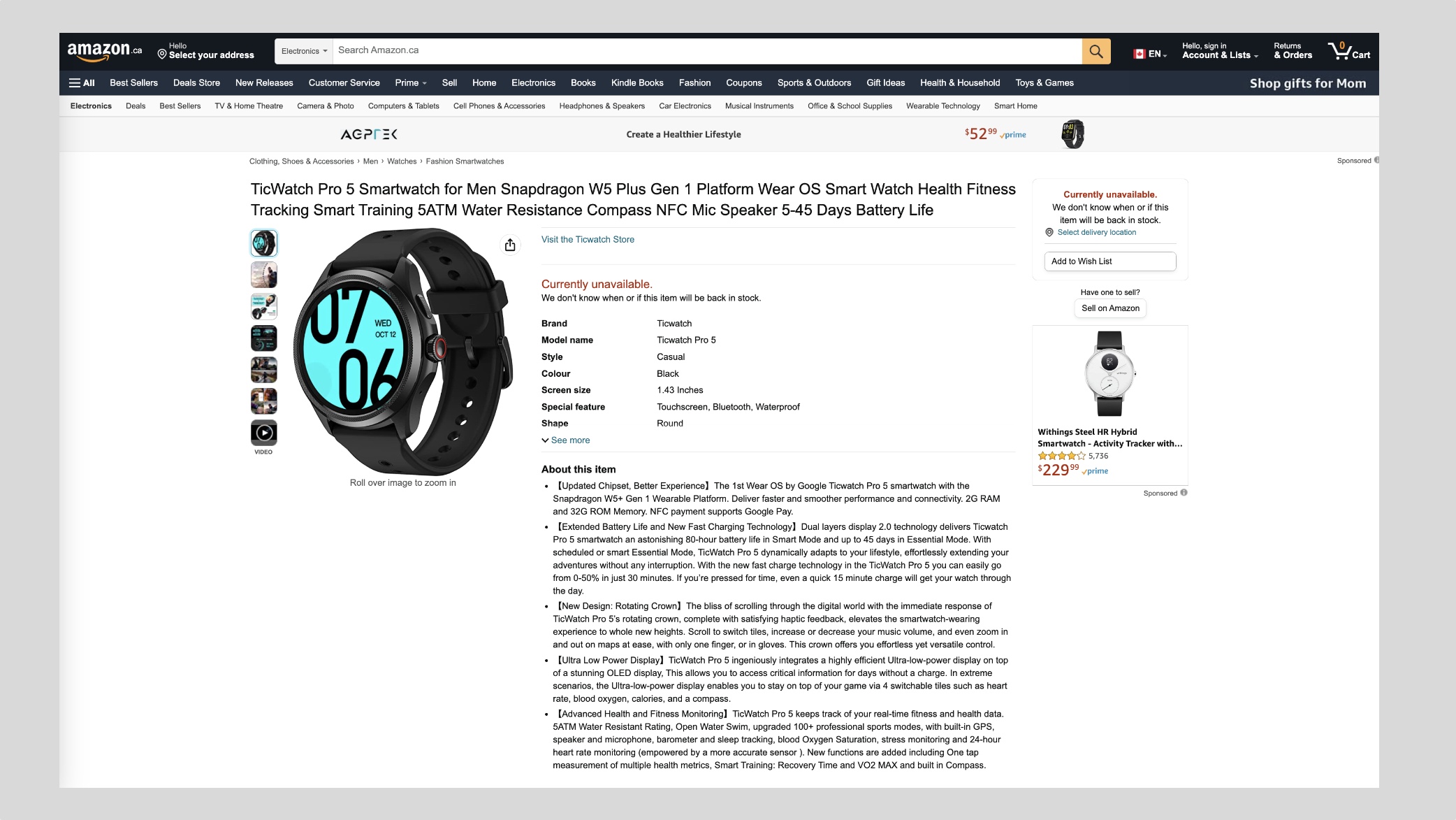
All the specs and features of the Mobvoi TicWatch Pro 5 have leaked, after a listing appeared on Amazon Canada.
The TicWatch Pro 5 has been eagerly awaited and is expected to be the first smartwatch to run the new Snapdragon W5+ generation of smartwatch processors.
And while its existence has been officially teased, we now have a clear idea of the key specs and design (see above).
> Read our TicWatch Pro 5 review here.
We’ve been most interested in the battery life, given that the Snapdragon W5+ boasts significant improvements in efficiency.
The TicWatch Pro 5 offers 80 hours of normal use, up from 72 hours on the Pro Ultra, thanks to a massive 611mAh battery.
It’s not the game-changing amount of battery life that we’d dreamed about, but it takes the Pro 5 into a fourth day, which means it offers more than the Apple Watch Ultra – and positively embarrasses the Pixel Watch – and that’s not to be sniffed at.
9to5Google
Key TicWatch Pro 5 specs
- Horizontal and vertical scrolling via digital crown
- Snapdragon W5+
- Dual layer display
- HR, stress, SpO2
- Heart rate backlight
- 80-hour battery life
- 45 days
- Recovery and VO2 Max
- Compass and barometer
- Google Wallet
Aside from the massive battery life, the longevity is enabled by the dual-layer display, which remains on the Pro 5, and enables 45 days of battery life in a low-power state. It will also charge 65% in 30 minutes.
The Pro 5 also boasts a beefy 50mm stainless steel case, a 1.43-inch AMOLED screen, and a 466 x 466 display.
Elsewhere, it looks like a rich Wear OS 3 experience.
There’s a focus on athletic performance, not only with recovery and VO2 Max analytics, but also a new HR backlight, that illuminates the screen with your heart rate zone.
It adds stress tracking and spot checks for SpO2, but there’s no mention of ECG or other advanced health metrics filtering down from the likes of the TicWatch GTH 2. However, there is a temperature sensor on board.
There’s no word on pricing or release date, but it looks like it will be dropping soon.
Via: 9to5Google
How we test
